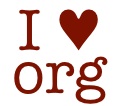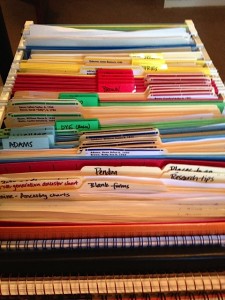 Ten years ago this month, I wrote a post called Are you organized enough?. Today, I present an updated version of that post. In my opinion, striving for organized enough is far superior to striving for perfectly organized. It’s easier and it’s more sustainable!
Ten years ago this month, I wrote a post called Are you organized enough?. Today, I present an updated version of that post. In my opinion, striving for organized enough is far superior to striving for perfectly organized. It’s easier and it’s more sustainable!
A lot of people (including me) strive to be organized, especially when it comes to their genealogy. There are over 43,000 members of the Facebook group, The Organized Genealogist! It’s obvious that many people are looking for ways to get their genealogy research organized.
That begs the question: What does being organized really mean?
I think the answer varies by the individual, but generally speaking, as a professional organizer, I believe that being organized means that you’re able to put your hands on what you want, when you want it (well, within a minute or two). I always discourage people from striving to be “perfectly organized” (because that’s not really possible) and instead go for “organized enough.”
So how do you become organized enough? When it comes to family history research, the path to being organized starts with picking out a system that will work for you. There’s no one right way to organize your genealogy records. Pick what you think will work for you and try to keep it simple.
The next step is to implement your system going forward. Start immediately, with the next document you find. Don’t wait until you get through your backlog to start filing your incoming documents! The third step is to deal with your backlog. That is, implement your system using the papers or files you already have.
The final, very important, step is to maintain your system regularly. You don’t want to wait for a backlog to build back up before filing again. Instead, file as you go along. When you acquire a new document (be it paper or electronic) process and file it right away.
For me, the big difference in how I organize my genealogy files between now and when I first started getting interested in the hobby about two decades ago is that I no longer use paper files. All my documents are digital. I download, rather than print. And if something does come to me in printed form, I scan it. (This post, My process for downloaded documents, details my file-naming protocol and folder structure. They allow me to easily find any document on my hard drive.) I use Reunion software to keep track of my family tree and my sources. That gives me great peace of mind. (And, yes, I back everything up both on an external hard drive and in the cloud.)
The best part? My genealogy research doesn’t impinge on my physical space. The few paper files I’ve retained are in a rolling file cart that I tuck into a closet in my office. And my digital files reside tidily on my hard drive and in the cloud.
I’m not perfectly organized, not by a long shot. But I can find virtually everything I’m looking for quickly, so that makes me organized enough. And that also makes me happy.
If you’re interested in a deep dive on how I organize my own genealogy research, check out my Orderly Roots guide, How I Do It: A Professional Organizer’s Genealogy Workflow.

 A lot of people (including me) strive to be organized, especially when it comes to their genealogy. You need look no further than the incredibly popular and busy new Facebook group,
A lot of people (including me) strive to be organized, especially when it comes to their genealogy. You need look no further than the incredibly popular and busy new Facebook group, 